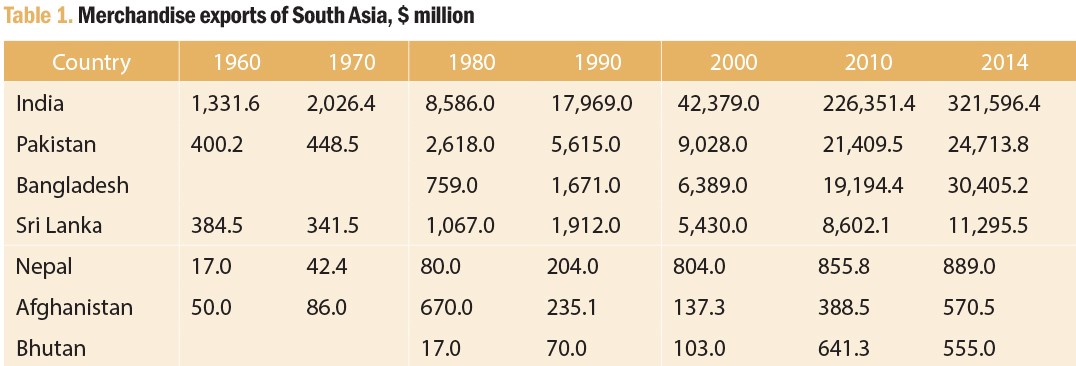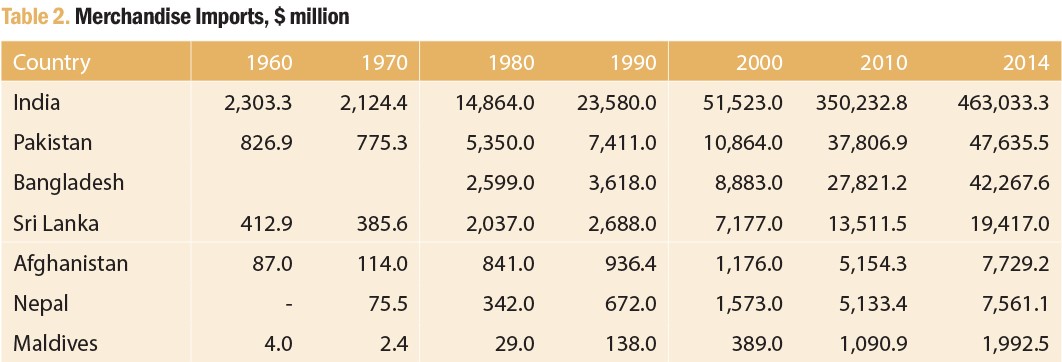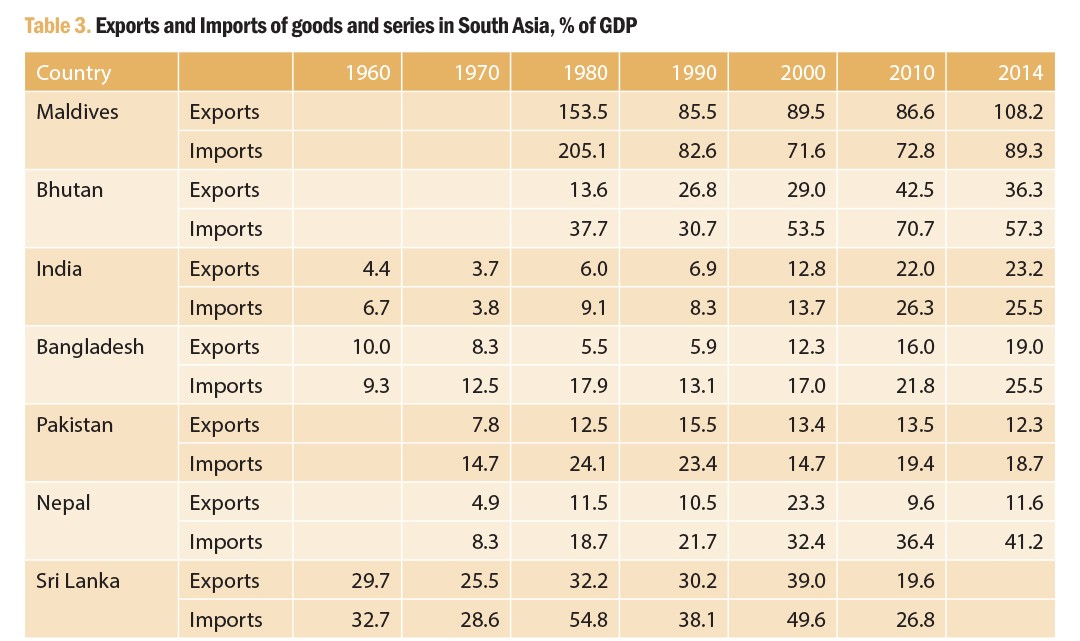
Below are the numbers for the exports of goods of the eight countries in the region. Notice the low values for the three landlocked countries-- Nepal, Afghanistan and Bhutan -- their combined exports in 2014 was only $2,014 (notice the coincidence with year), or less than one-fifth of the exports of Sri Lanka.

Bangladesh and India managed to expand their exports by 5x and 7x, respectively, while Pakistan’s expanded by more than 2x.
In terms of imports, it is notable that all the eight countries suffer from perennial trade deficit. Afghanistan and Nepal in particular have imports that are about 8x that of their exports, very imbalanced trade in goods.

But such trade deficit in goods can be balanced and compensated by trade surplus in services. Like remittances of nationals who are working and living abroad, plus high revenues in tourism. Many of the world’s biggest and tallest mountains are in the Himalayas – in Nepal, Bhutan and India.
The high imports relative to demand may be additional household and corporate consumption to sustain their dynamic tourism sector. Like more imports of fuel and vehicles to transport hundreds of thousands if not millions of tourists and visitors to many areas of these countries.
In terms of overall exports and imports of goods and services, Maldives lead the region for many decades until today. The tourism sector there is very vibrant.
The smallest numbers in the region are those from Pakistan.

Given the landlocked geography of some countries in the region like Nepal, the sectors that need special attendance by their governments are the road infrastructure and airports development plus liberalisation of the airline industry and power generation sector. The development and liberalisation of these and related sectors are particularly in high demand in Nepal.
Bienvenido "Nonoy" Oplas, Jr. is a free market proponent based in Manila, the Philippines. He is President of Minimal Government Thinkers, Inc. and a regular columnist and blogger, (funwithgovernment.blogspot.com).


